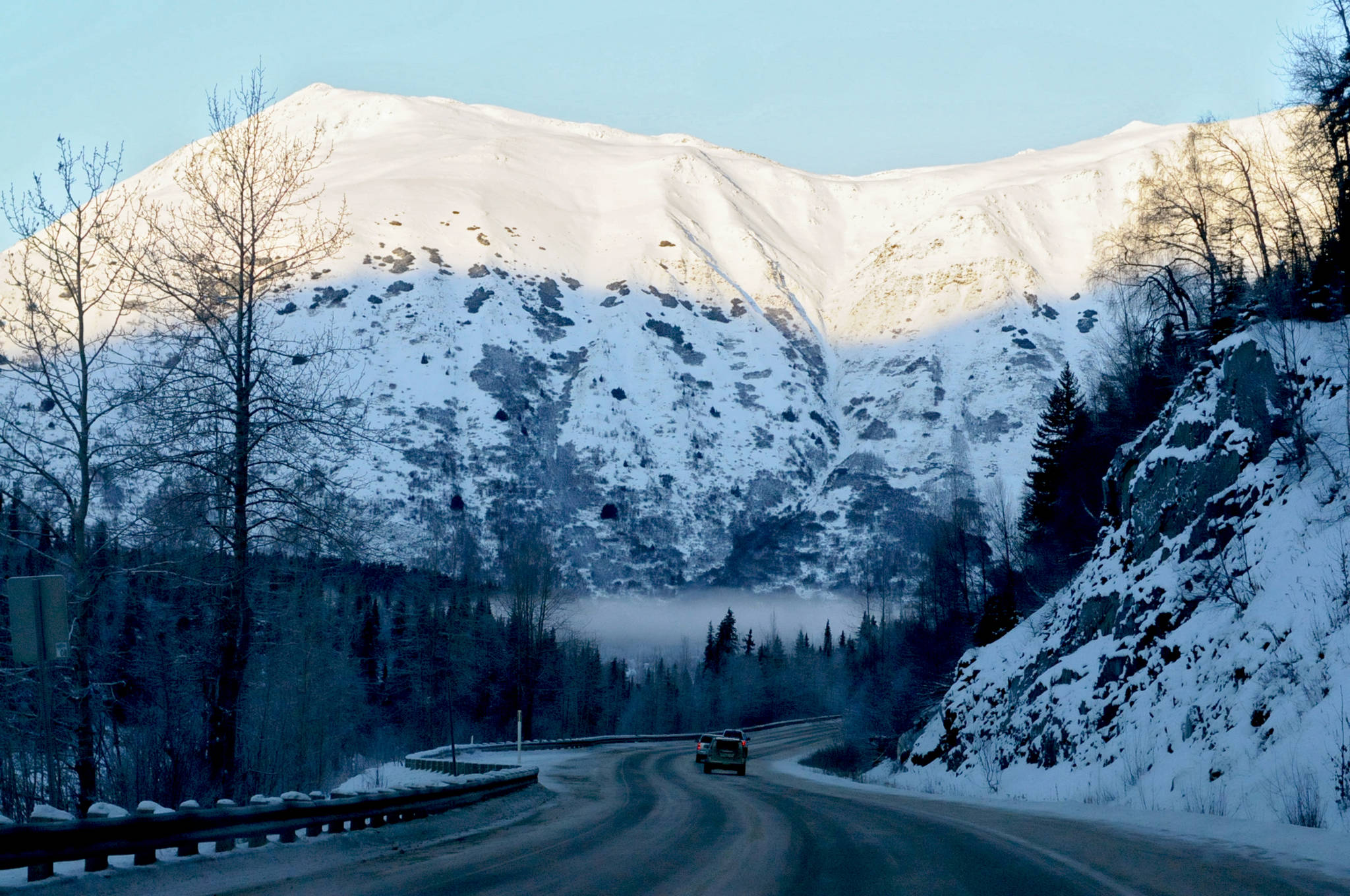The new service area aimed at ensuring an emergency medical service response to car accidents and medical calls on the eastern Kenai Peninsula now has a budget.
At its Tuesday meeting in Homer, the Kenai Peninsula Borough Assembly approved a $350,000 budget for the Eastern Peninsula Highway Emergency Service Area, about $232,500 of which is budgeted to be used. The rest will go into a fund balance to carry from year to year.
The service area covers the Seward Highway between Bear Creek and the edge of the peninsula at Ingram Creek and the Sterling Highway from the Jean Lake hill west of Cooper Landing to the junction with the Seward Highway.
Virtually the whole area along the highway is federal land, administered by the U.S. Forest Service through the Chugach National Forest. However, it’s the only road in and out of the peninsula. Traffic estimates from the Alaska Department of Transportation and Public Facilities state that 3,000–4,000 cars traveled along the highway daily in 2015, with summer peaks nearly three times higher than that. Some of the traffic is commercial traffic and tourists, but some is also Kenai Peninsula residents traveling back and forth to Anchorage or between the eastern and western parts of the peninsula.
Until now, there has been no assurance of emergency service response east of Cooper Landing except in Seward and Bear Creek. There are volunteer fire and emergency service agencies in Moose Pass, Cooper Landing and Hope, but without a formal service area and funding, they are not obligated to respond and depend on volunteer staffing and support from Central Emergency Services on the western peninsula, the nearest station of which is in Sterling.
The service area seeks to bridge some of the challenge by providing support for the existing volunteer departments and ensuring a response. At the meeting Tuesday, the assembly passed the budget ordinance 6-1, with member Paul Fischer as the sole “no” vote, assembly member Jill Schaefer absent and former member Stan Welles’ seat still vacant after he resigned in August.
“This fund is going to allow them to start getting those contracts in place … which could be local responders that can choose to respond or not,” said Scott Walden, the borough’s Emergency Management Director, in testimony to the assembly Tuesday.
Walden said the biggest goals for him as emergency manager through the service area would be to get the agreements in place to allow the existing organizations to keep serving their communities, get support to respond outside their communities when necessary and keep up the agreements between them and CES to make sure someone is available to respond.
Borough Mayor Mike Navarre said the problem first came to his attention in Cooper Landing in 2012, when one of the emergency response volunteers said Cooper Landing Emergency Services was considering contracting its service area to exclude the highway, where many of its responses were. Responding to accidents and then transporting people to Soldotna, many of whom were not Cooper Landing residents and who did not donate funds to support the emergency services organization, was exhausting the volunteers, Navarre said. Over the years, the borough and Cooper Landing have been trying to work out a solution to the problem, and the service area is one that’s won support from the small communities and volunteers there.
“We kept encouraging them (CLES) not to reduce the size of the service area because if they reduce the size of the service area, there’s no one to respond,” Navarre said at the assembly meeting. “If they don’t have a mutual aid agreement with the adjacent areas, if there’s nobody that that area is covered by, then nobody can respond and call in a mutual aid, and it would have created an even bigger problem for the travelling public.”
Kachemak Emergency Service Area Chief Bob Cicciarella testified in support of the service area funding at the meeting Tuesday.
“Going through that area myself and being in emergency services for a lot of years, this is … something that is just imperative that needs to go forward,” he said.
Fischer, who ultimately cast a “no” vote, motioned for the assembly to postpone the vote for two weeks to gather additional public input and information before deciding. The only public comment submitted in writing opposed the ordinance, saying the borough is increasing its current spending deficit by pulling Payment in Lieu of Taxes funds from the general fund to pay for the service area without a plan to replace them. Fischer echoed this concern.
However, the other assembly members said they thought the service area was a necessity and were willing to fund it. Assembly member Wayne Ogle said he considered all the factors, including the stress and demand on the volunteers, and supported the budget for the service area. The Cooper Landing volunteers, for example, are not the kind of people to get a call for help on the road and ignore it because they only stay in their area, but they need support for that, he said.
“To keep them in that particular circumstance of being called upon to respond and not providing resources for them and having the number of people that …travel that road, and also the number of people we try to get to visit our borough during the summers as vacationers, you know, we’re in a situation where we’re putting responders in an impossible situation and keeping them there,” Ogle said.
Homer News reporter Megan Pacer contributed to this report. Reach her at megan.pacer@homernews.com. Reach Elizabeth Earl at elizabeth.earl@peninsulaclarion.com.


